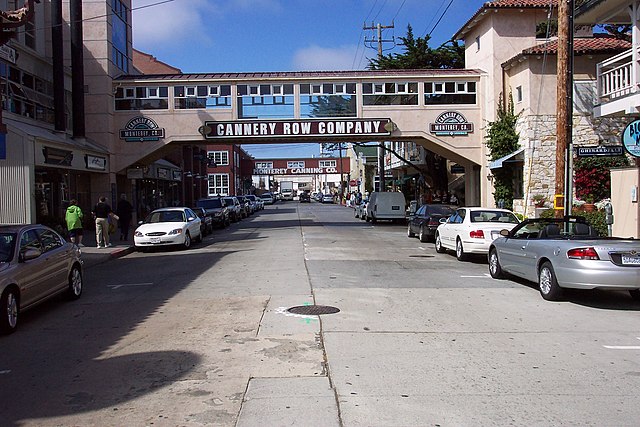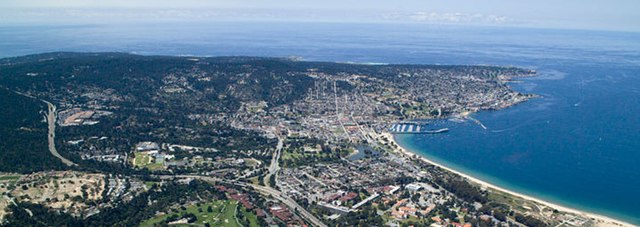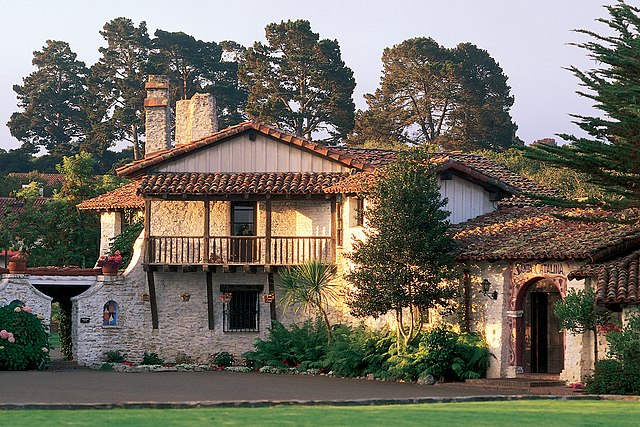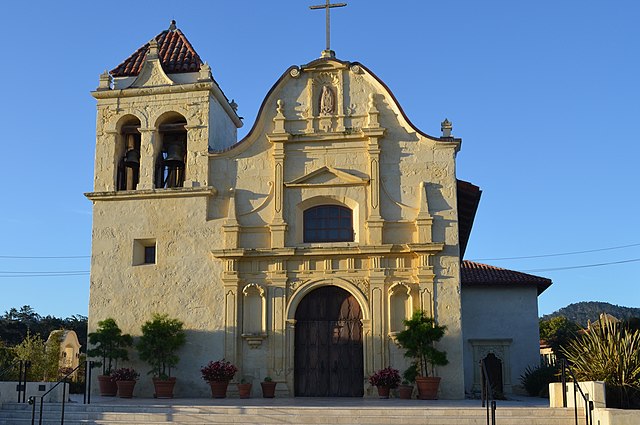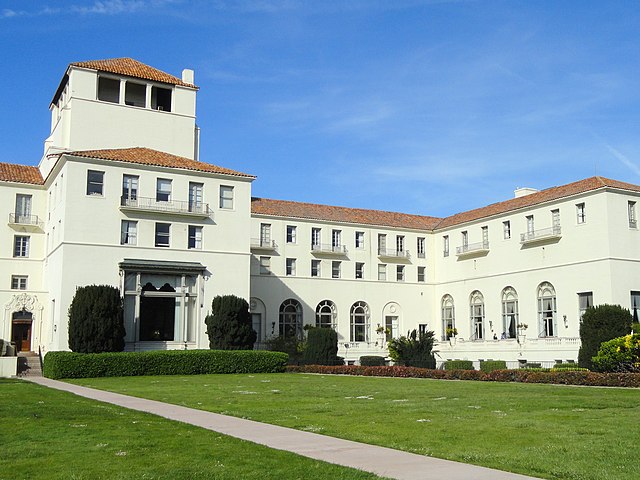Cannery Row is the waterfront street bordering the city of Pacific Grove, California, but officially in the New Monterey section of Monterey, California. It was the site of a number of now-defunct sardine canning factories. The last cannery closed in 1973. The street name, formerly a nickname for Ocean View Avenue, became official in January 1958 to honor John Steinbeck and his novel Cannery Row. In the novel's opening sentence, Steinbeck described the street as "a poem, a stink, a grating noise, a quality of light, a tone, a habit, a nostalgia, a dream."
Cannery Row looking north toward the end of the row where the Monterey Bay Aquarium now sits next to the bay
Cannery Row at night
The Pacific Biological Laboratories of Ed Ricketts on Cannery Row
Old Hovden Cannery steam boilers
Monterey is a city in Monterey County on the southern edge of Monterey Bay on the U.S. state of California's Central Coast. Founded on June 3, 1770, it functioned as the capital of Alta California under both Spain (1804–1821) and Mexico (1822–1846). During this period, Monterey hosted California's first theater, public building, public library, publicly funded school, printing press, and newspaper. It was originally the only port of entry for all taxable goods in California. In 1846, during the Mexican–American War of 1846–1848, the United States Flag was raised over the Customs House. After Mexico ceded California to the U.S. at the end of the war, Monterey hosted California's first constitutional convention in 1849.
Image: Aerial view Monterey CA (cropped)
Image: Santa Catalina School, Monterey, CA (cropped)
Image: Cathedral of San Carlos Borromeo (cropped)
Image: Herrmann Hall Naval Postgraduate School DSC06807 (cropped)

